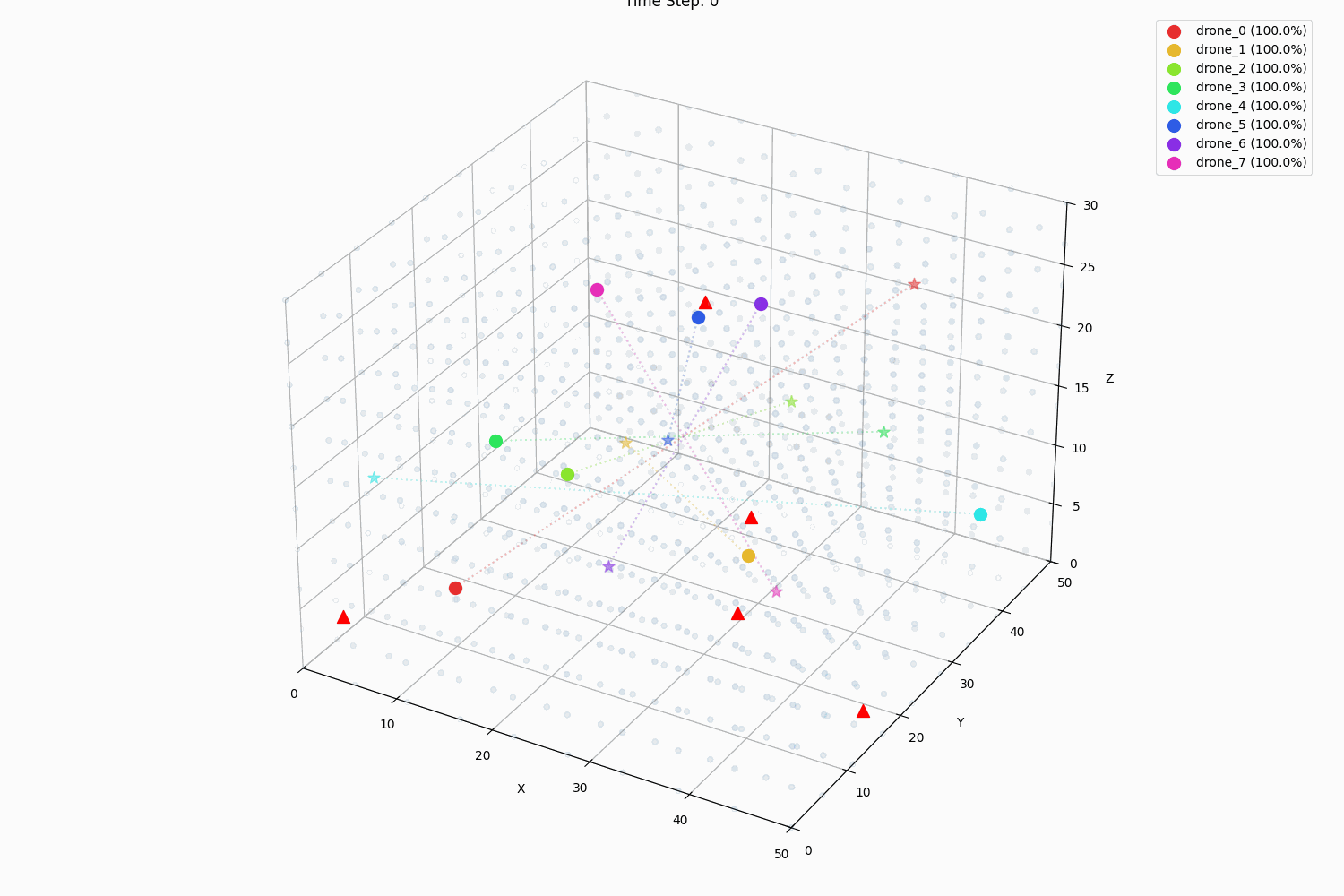Challenge
Design a coordinated pathfinding system that could handle multiple agents while maintaining optimal spacing, energy efficiency, and environmental adaptation, all while preventing collisions through a physics-inspired approach.
Solution
Implemented a novel elastic mesh system where each path acts as a dynamic spring, creating a self-organizing network that naturally maintains separation while optimizing routes. The system adapts to obstacles and weather conditions through mesh tension and relaxation.
Implementation
- Developed physics-based path modeling with spring dynamics and tension propagation
- Created adaptive mesh networking for multi-agent coordination
- Implemented real-time weather influence system affecting mesh properties
- Built comprehensive collision avoidance through mesh tension mechanics
- Integrated energy optimization through elastic potential minimization
- Developed real-time visualization system for mesh dynamics and analytics
Simulation Analysis
Dynamic Mesh Behavior
Demonstration of elastic mesh network adapting to dynamic conditions and maintaining optimal spacing

Mesh Dynamics
Accuracy: 95.2%Latency: 18msEnergy Balance
Accuracy: 93.8%Latency: 22msTension Control
Accuracy: 97.1%Latency: 15msTechnical Architecture
Elastic Mesh Architecture
System architecture showing mesh network components and interactions
Physics-Based Path Planning
Sequence diagram showing physics-based path planning process